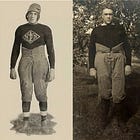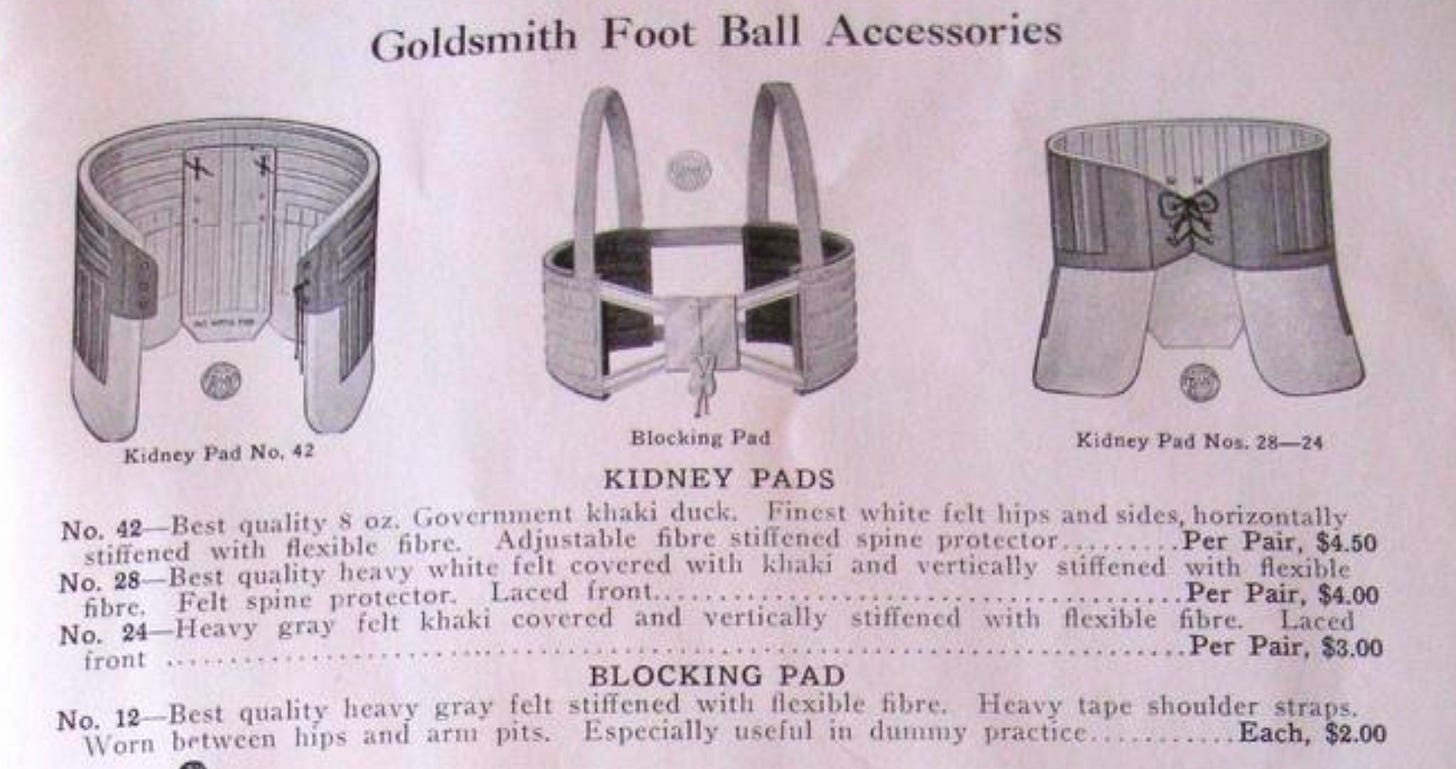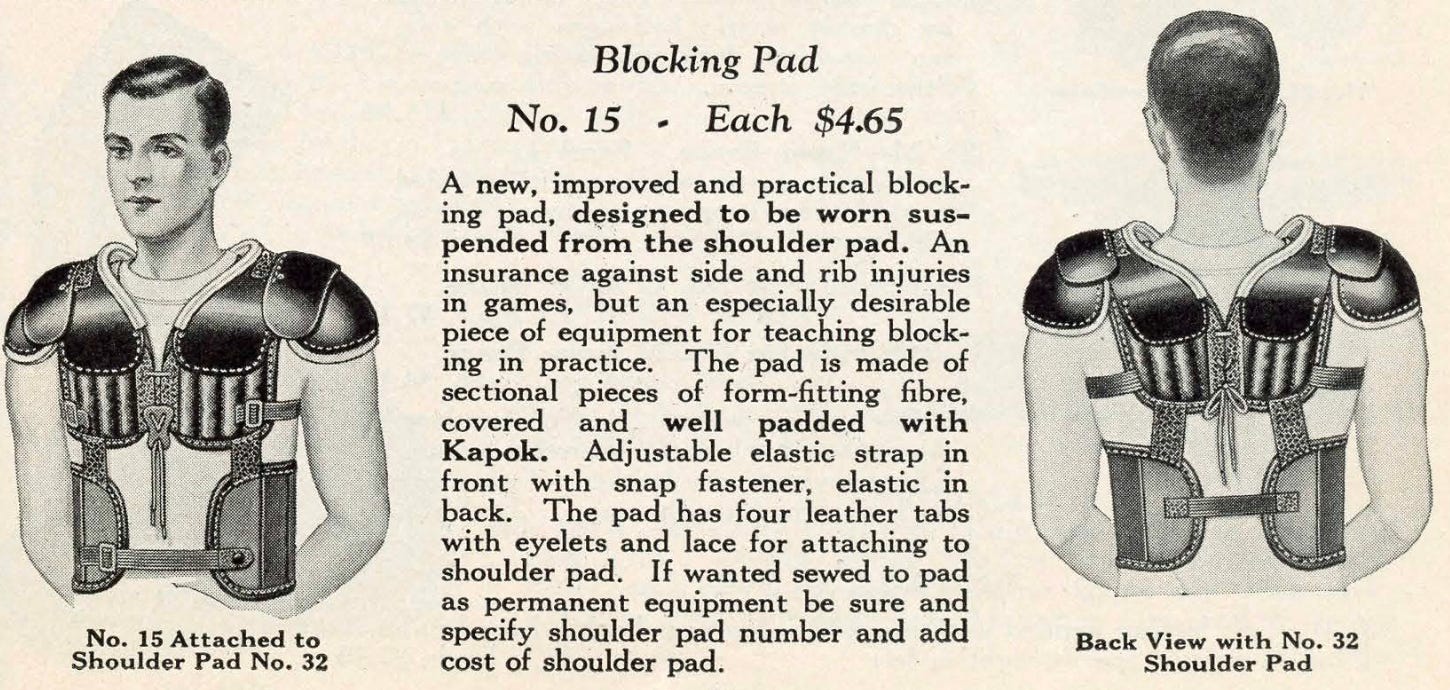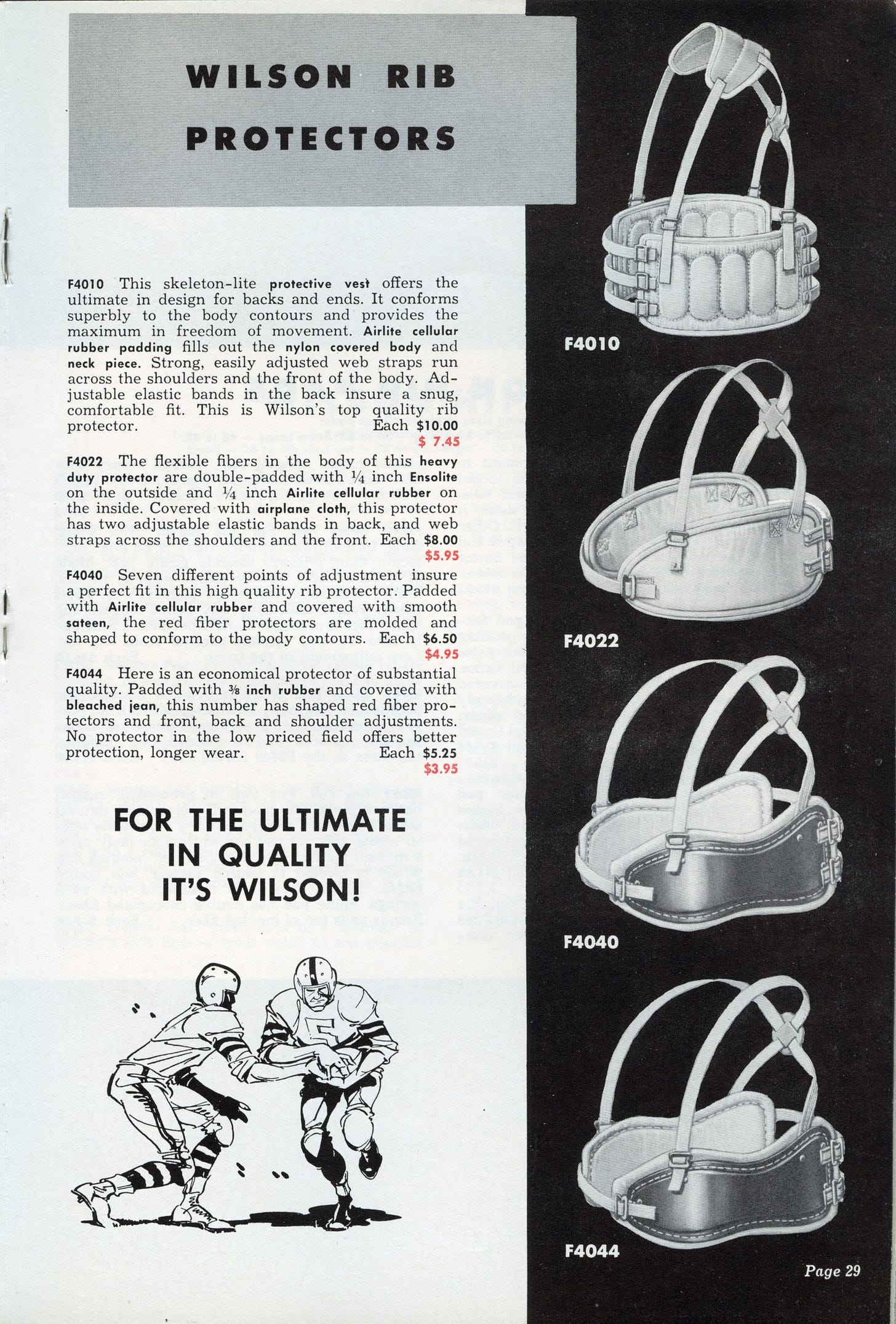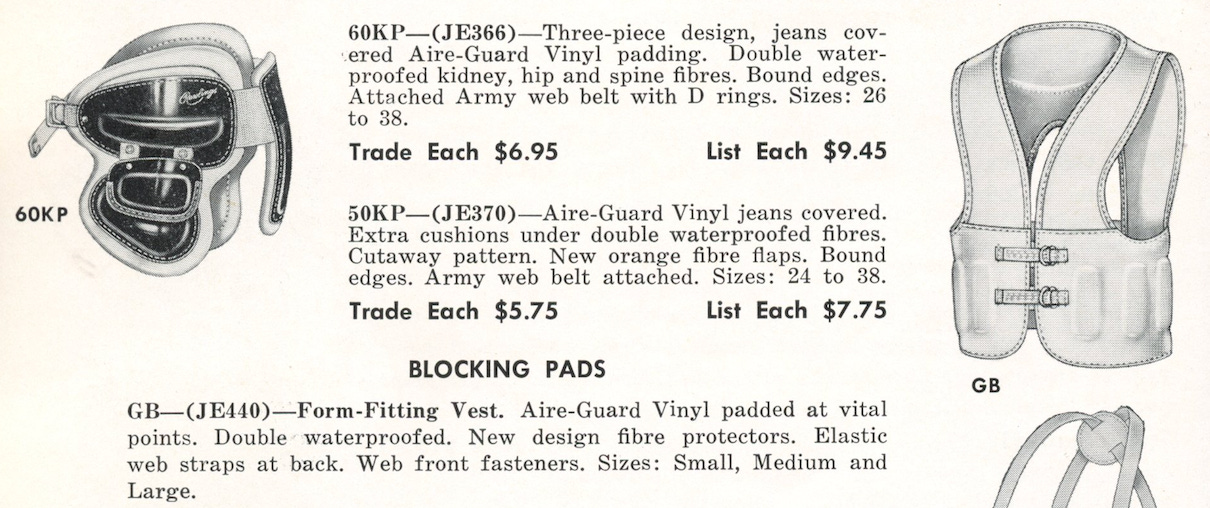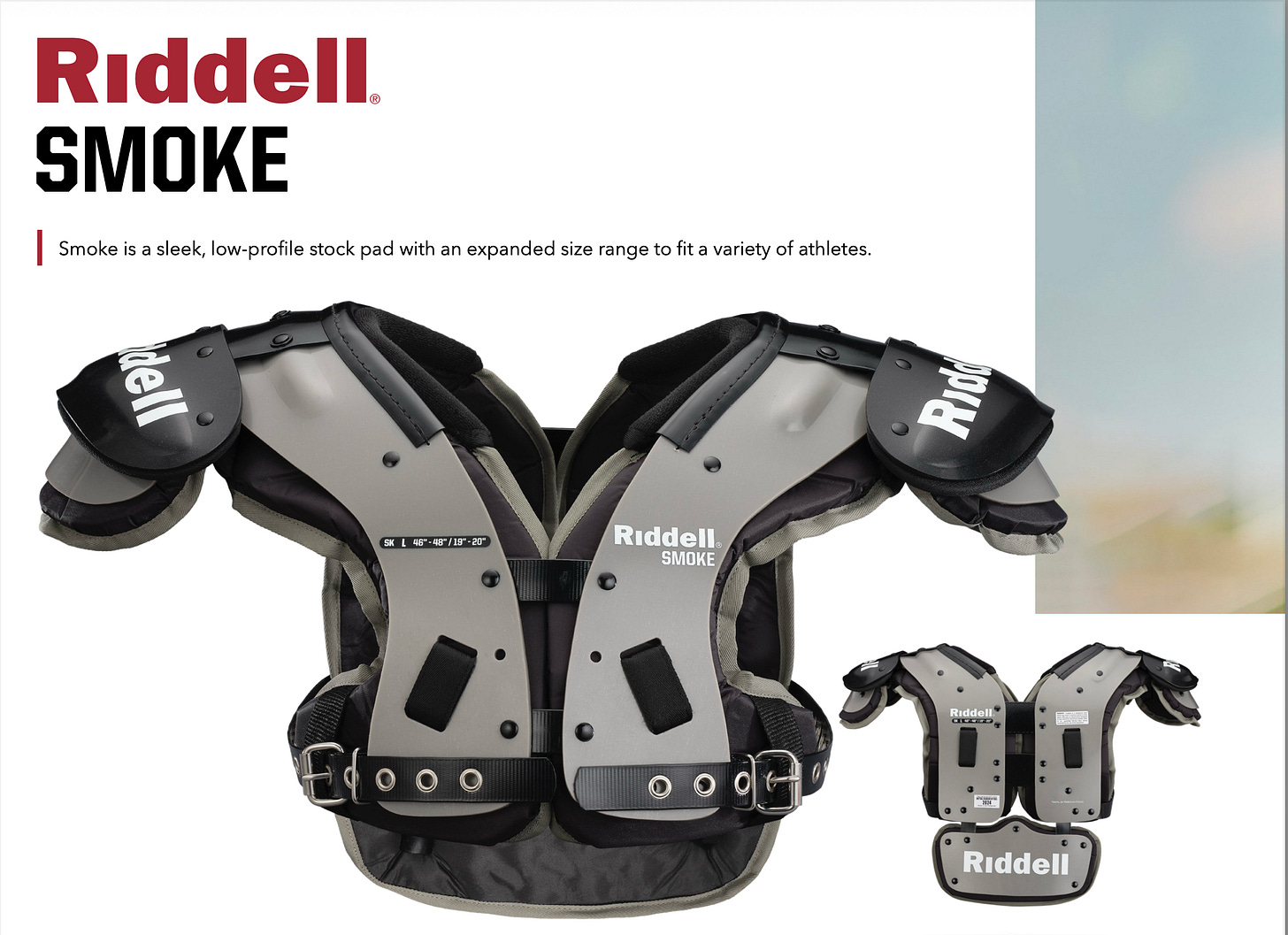Blocking Pads: Ain’t That A Kick In The Ribs
Since football players began padding up in the 1890s, the game has had a love-hate relationship with pads. Early pads were primarily made of leather or cotton, which absorb water and become heavy, which sucks if you want to move quickly. Well-to-do teams changed pants at halftime to rid themselves of their sweat or rain-soaked encumbrances.
While head harnesses or helmets, shoulder pads, thigh pads, knee pads, and hip/kidney pads were standard, pads protecting the ribs were not. Whether they were called blocking pads, rib protectors, or flak jackets, they were a relatively late arrival in the padding department. Blocking pads do not appear in the Spalding and D&M catalogs of the 1910s, and the first listing in my catalog collection appears in the 1924 Goldsmith Football Equipment College Catalog, with other manufacturers adding them a few years later.
Their late arrival raises the question of why blocking pads were so tardy. One explanation is that many players wore high hip and kidney pads back then, some reaching nearly to a player’s armpits.
Another explanation might be that it was not until the forward pass and the Single Wing opened up the game that teams used the rolling block in the open field often enough for players to be regularly kneed or kicked in the ribs while making those blocks.
On the other hand, offensive linemen were unable to use their arms when blocking, so they had used body blocks for some time, even the high low variety, now penalized and called a chop block.
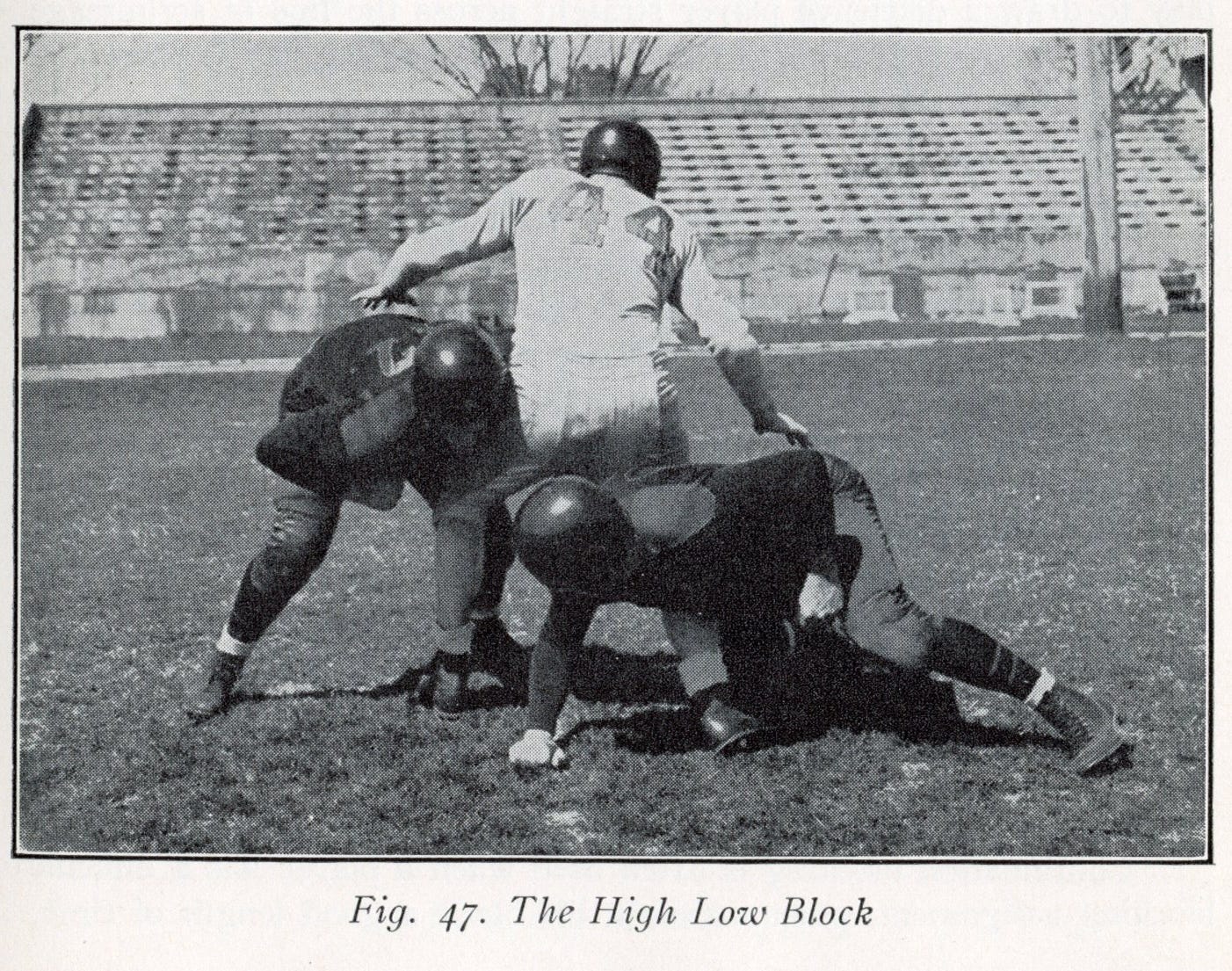
Whatever the reason for the delayed arrival, enough blows to the chest convinced players to seek protection, and the good folks at Goldsmith responded. The image below shows a bra-style blocking pad in between versions of hip and kidney pads, indicating that Goldsmith saw them as separate products. The product description also states they physically fit between the wearer’s hip pads and armpits, so hip pads clearly did not provide adequate rib protection.
Goldsmith’s 1927 catalog lists a wraparound version of blocking pads that cinches around the chest with a leather belt and buckle.
Many full-line manufacturers did not consistently offer blocking pads, and those that did offered only one version, while they might have a dozen or twenty shoulder pad styles.
Goldsmith upped the rib protection game by 1935 with blocking pads suspended from the shoulder pads. As their product description states, the pads were beneficial in practice when repeatedly drilling how to roll or body block. Just as they do today, players back then wore some protective gear in practice that they shed at game time.
Over time, some manufacturers offered up to half a dozen models of blocking pads, adding hard shells to some, just as they had with shoulder and hip pads.
Another big step in rib protection came a few years later with the vest-style pads, such as those offered by Rawlings.
Due to rule changes banning blocking below the waist and allowing offensive players to extend their arms when blocking, the need for rib protection for many positions faded, but it increased in the case of quarterbacks, who threw the ball more often and did so from the pocket, leaving them and their ribs open to injury. A significant advance in rib protection came with the flak jacket of the late 1970s and beyond, which emerged when Byron Donzis used new materials to design a rib protector for the injured Houston Oilers quarterback Dan Pastorini in 1978. Here’s a period video featuring Donzis and some Oilers players.
Rib protection today comes in several forms. Various vest-style protections are available, as are rib belts, such as those offered by Riddell. However, many players today are protected by shoulder pads, whose bottoms wrap around the ribs.
As with all other pads, rib pad use depends on players’ position, personal preference, and injury history, but they have certainly come a long way from the leather-and-felt pads of yesteryear.
Football Archaeology is reader-supported. Click here to donate a couple of bucks, buy one of my books, or otherwise support the site.


